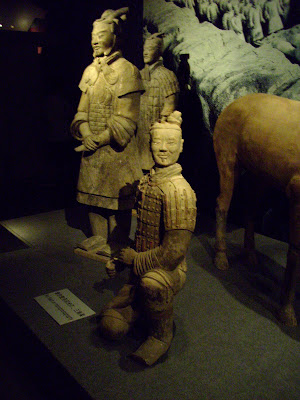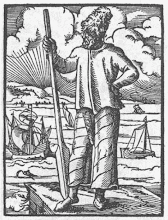On Sunday the mother pro tempore, along with her mother, took me on a whirlwind tour of two of Beijing's museums. We had to ride the subway for an hour, walk a few blocks in scorching heat, fend off the Olympic volunteers looking for a foreigner to say something quotable, wait on line, buy tickets, find the decent exhibits, and (in my case) translate the placards. But you, Readers of the Foreign Devil, have it easy:
This is a more or less typical example of early Chinese bronzeware, showing the high level of workmanship that modern craftsmen have had little success in replicating. |  |
To take this picture of a jinlüyuyi, a garment made of jade worn by the deceased in their tombs, I had to reach over the heads of a crowd of museumgoers. |  |
 | Next we went to the Military Museum, guarded by military police taking refuge under umbrellas bearing McDonald's ads. |
Many of the exhibits at the Military Museum were just collections of old weapons. There were however a few more interesting things.... |  |
 | ...such as this placard on the base of a rather ugly Soviet-style propaganda statue. The devils in question are, naturally, the Japanese. |
 | Chairman Mao had pride of place in the lobby; and since I hadn't taken my obligatory photo with a Mao statue yet, I figured it was as good a chance as any. |





No comments:
Post a Comment